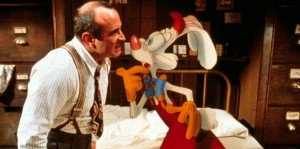
It took him a while to find his motivation and drive again, but in 1972 he was asked to create a strip for a magazine to be released, “ Funny Aminals“.


While in California, Art took work where he could find it and dove deeper into the comix movement, as it was in its heyday. Spiegelman began to detach from his remaining family, and after multiple trips to and fro, finally moved to San Francisco in 1971, clear across the continent. Shortly after his release he moved back in with his parents, only to have his mother commit suicide following the death of her only brother. He dropped out due to a severe nervous breakdown, and spent a month in Binghamton State Mental Hospital.
#Mousterpiece spiegel Patch#
He never finished college, however, and hit a particularly rough patch around the time he would have. These collectible cards became a staple of 90’s culture, counterculture, and are still being sold to this day. These cards parodied celebrity and consumer culture, often depicting gross-out parodies of Cabbage Patch Kid dolls named and modeled after celebrities and world events of the day. He became a key member in the Products Development Department, and became one of the co-creators of the iconic Wacky Packages and Garbage Pail Kids collectible art cards. Seeing as he now spent time on a college campus and had built somewhat of a name for himself, distribution became much more easy and widespread.ĭuring his time in college, his job at Topps also progressed. His work became more subversive and deep, and he began self-publishing his own mini-magazines and comics more commonly. He began publishing his works in the school paper and humor magazine, and became very involved in the new and mysterious underground “comix” scene. Gelman all but promised him a job upon his graduation, and Art took him up on it.Īfter graduating in 1965, Spiegelman enrolled at Harpur College to study art and philosophy, and maintained a freelance contract with Topps. He finished off his primary education at the High School of Art and Design, and while he was there met Woody Gelman, the art director for Topps Chewing Gum. Art refused the offer mostly because it clashed with his own ideals about art that art was for expression, and was meant to be ever-changing in both style and meaning. By the age of fourteen, he was already submitting art and comic strips to fanzines and minor publications, and had even created his own magazine, “Blas é ” which he had modeled after Mad Magazine and distributed at his junior high school.īy the time he was in high school, he was already selling artwork to various publications, and even had to turn down the chance to publish a syndicated comic strip. He started early with art, taking a lot of inspiration from parody and subculture media like Mad magazine and the comic books of the day. He was a prolific artist for almost all of his working life.Īrt Spiegelman was born in Sweden in 1948, his family immigrated to the US in 1951, initially settling in Pennsylvania but eventually ending up in Queens NYC.


However, Spiegelman’s personal story doesn’t start with Maus, nor does it end there. Maus garnered a lot of attention for its time, received a special Pulitzer award, and is one of the first books ever to be considered a non-fiction graphic novel. My introduction to him was through Maus, his autobiography-biography that followed him documenting his father as he recalled his time in the Holocaust. Art Spiegelman is one of the most well-known adult comic creators.


 0 kommentar(er)
0 kommentar(er)
